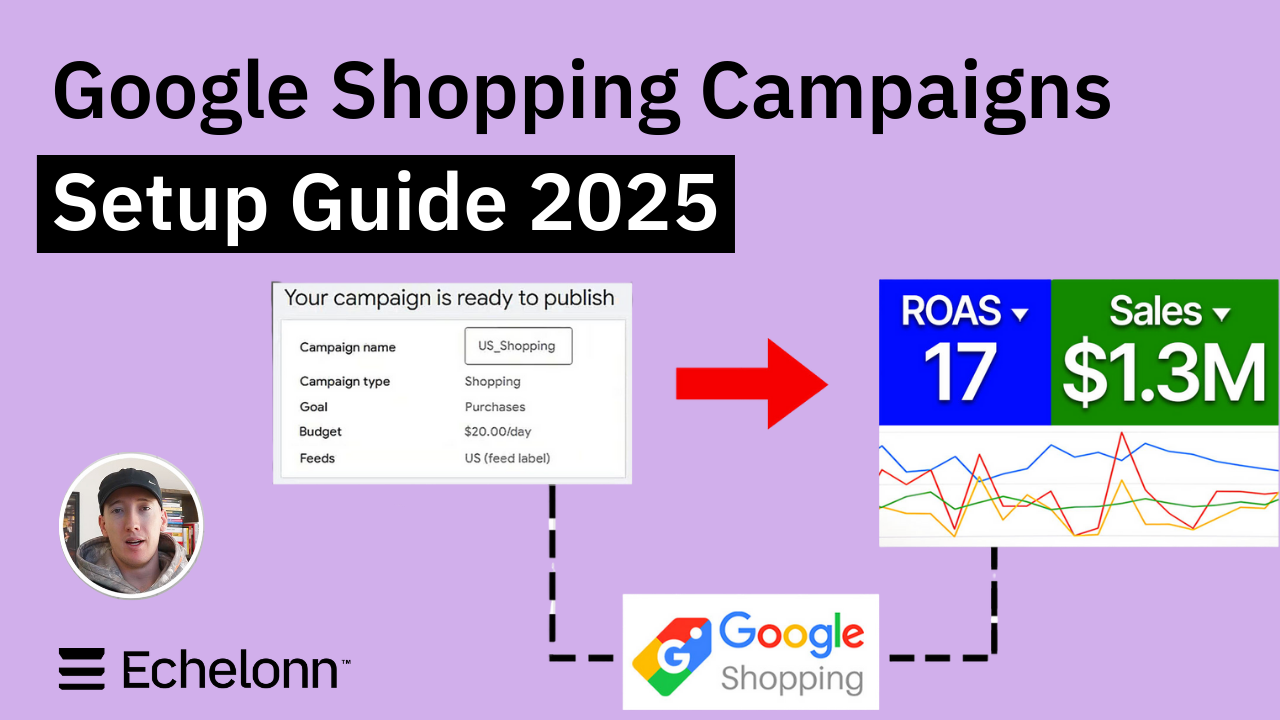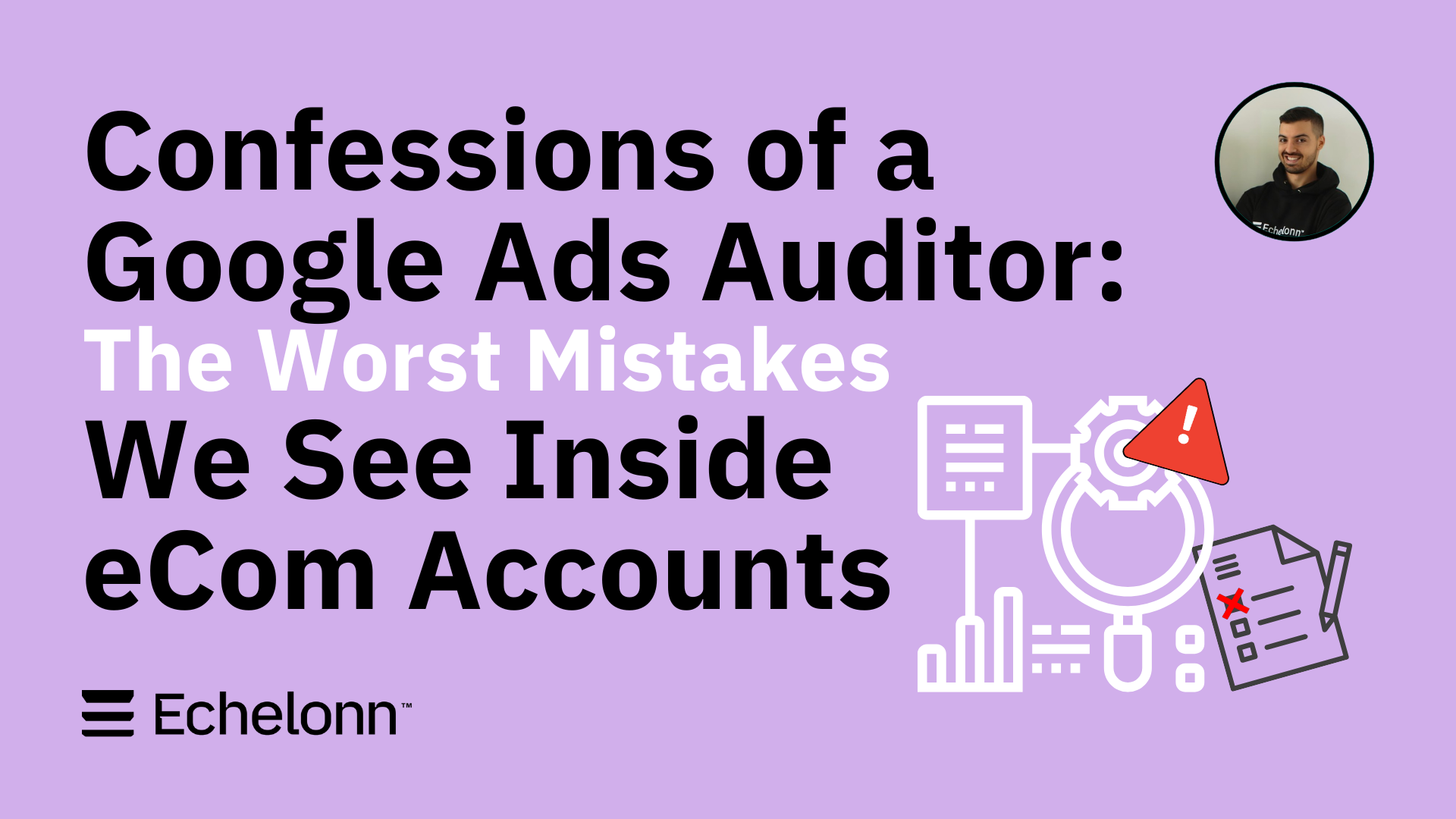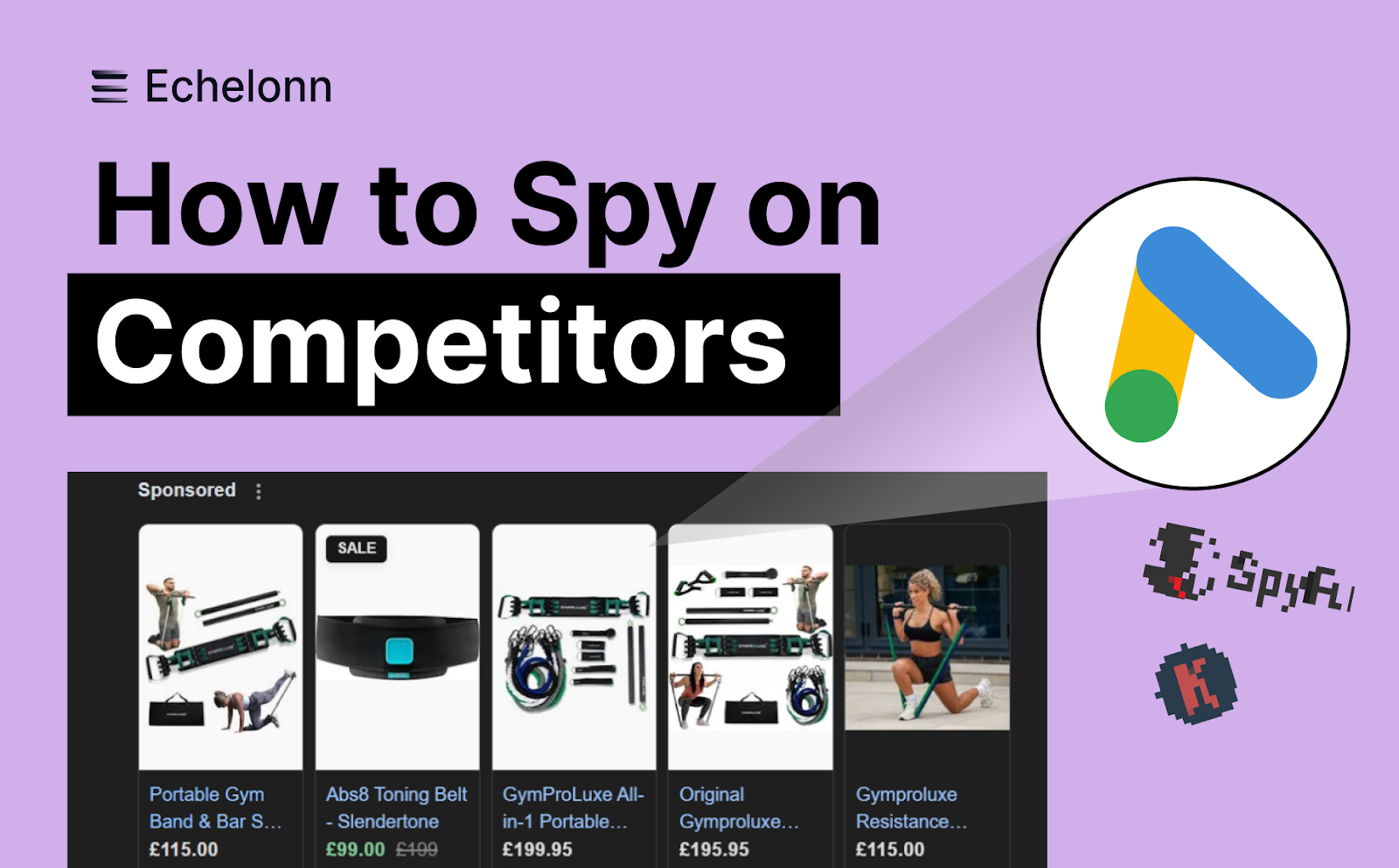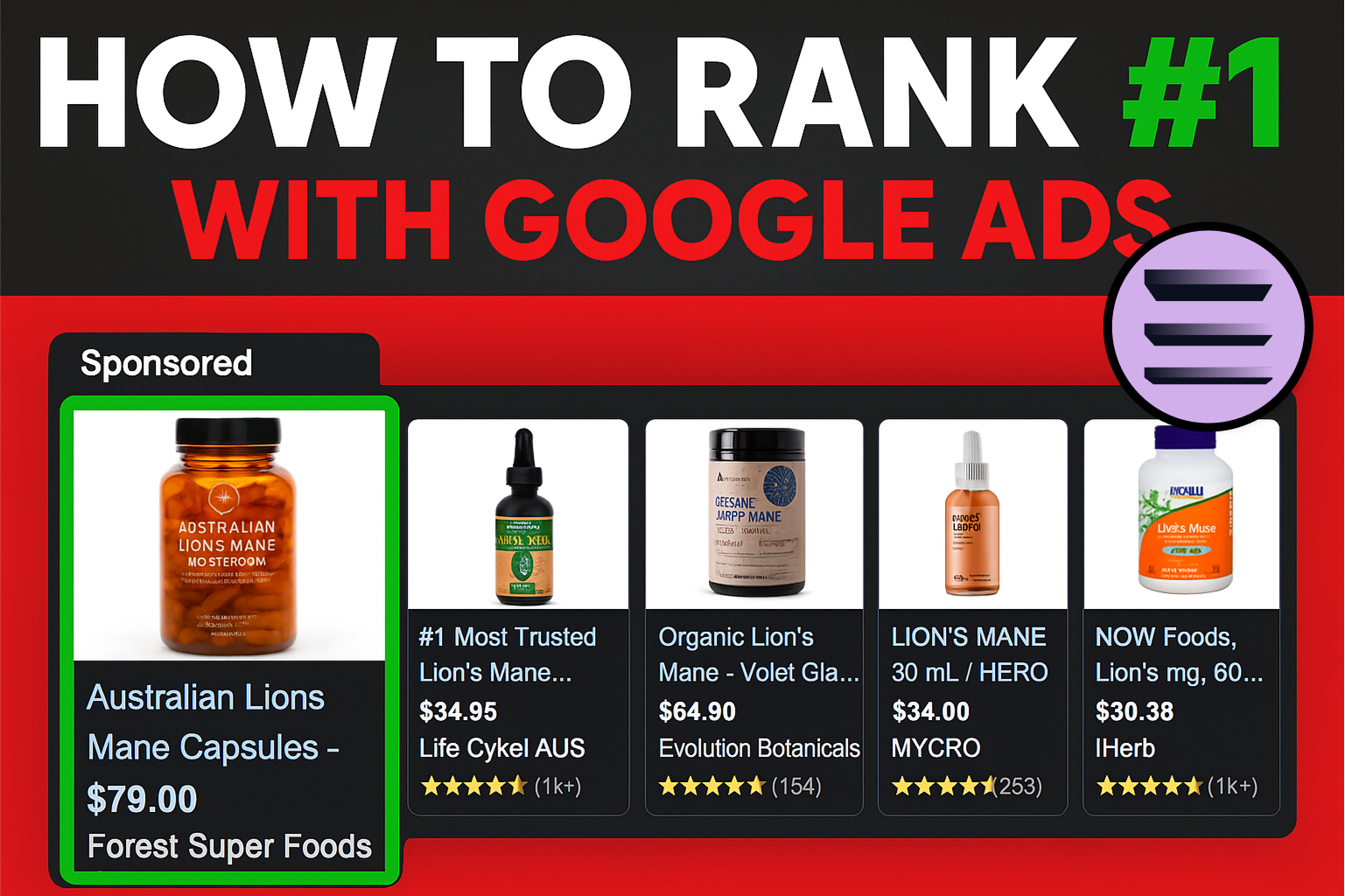Complete YouTube Ads Guide 2025 | 3 Formats, 5 Principles, Proven Results

Video Breakdown
Why YouTube Ads Are a Game-Changer for E-commerce
Google is basically giving away ad space on YouTube right now. While Facebook CPMs have skyrocketed to $7.75 on average, YouTube remains at just $2.89. Yet most brands haven't figured out how to make it profitable.
We've uncovered a fundamental flaw in how marketers approach YouTube. Our team has turned YouTube from a money pit into a profit machine for brands like Tab, Snow, Crafted, Muscle Nation, and the Collagen Co. It's the exact same strategy that's generating millions in additional revenue.
Here's the problem most e-commerce brands face. They treat YouTube ads like Meta ads. They use the same targeting strategy. They run the same creative formats. They measure success with the same metrics. This approach fails because YouTube operates differently.
YouTube users aren't scrolling through a feed looking for products. They're watching content. They're learning. They're being entertained. Your ads need to hijack their attention, not capture existing intent like Google Search does.
Most brands also miss YouTube's unique conversion tracking complexities. Discrepancies between platforms can range from 10% to 30% due to differences in attribution models. This creates misleading data that makes profitable campaigns look unprofitable. Our team discovered this flaw after auditing over 300 brands just this last year alone, while managing $7.5-8.5 million monthly on Google ads.
The opportunity is massive right now. While everyone fights for expensive Facebook traffic, YouTube offers cheaper, higher-quality customers. But you need the right approach.
This isn't about abandoning your Meta or TikTok strategy. It's about complementing it with a channel that doubles your efficiency while adding incremental revenue. When done correctly, YouTube ads become your secret weapon for profitable scaling.
The brands winning on YouTube understand one thing. Creative quality can increase Return on Ad Spend (ROAS) by up to 2.2x compared to poor-performing creatives. No amount of perfect targeting saves bad creative. But great ads drive low CPMs, high view rates, and strong ROAS on this platform.
Let's dive into the exact campaign structure that makes this possible.
The Winning YouTube Ads Campaign Structure
Before diving into creative development, you need a solid foundation. Our team learned this lesson after burning through budgets on poorly structured campaigns. The difference between profitable YouTube ads and money pits comes down to campaign architecture.
Foundation Setup: Prospecting vs Remarketing
Start with two distinct campaigns: prospecting and remarketing. This separation gives you complete clarity over each funnel stage.
Your prospecting campaign targets cold audiences who've never heard of your brand. These users need different messaging than warm prospects. Your remarketing campaign focuses on people already familiar with your business.
We've seen brands mix these audiences together. The result? Confused messaging and wasted spend. Cold traffic needs education and trust-building. Warm traffic needs gentle nudges toward purchase.
Segmenting YouTube ad campaigns by prospecting and remarketing typically results in ROAS improvements ranging between 30% and 70% on average. This two-campaign structure also simplifies budget allocation. You can invest more heavily in whichever funnel stage performs better.
Ad Group Organization by Format
Split your ad groups by format within Demand Gen campaigns. YouTube offers three main options: Shorts, in-stream, and in-feed placements.
Each format requires different creative approaches. YouTube Shorts need immediate attention-grabbers within 0.3 seconds. In-stream ads have more time to build narrative. In-feed ads compete with organic content.
Important note: YouTube for Action campaigns will be deprecated in July 2025. Set up your campaigns as Demand Gen campaigns instead. Configure ad groups to show ads only on the YouTube network for the specific format you're targeting.
This approach gives you greater performance control. You can tailor ad copy and creatives to each format and funnel stage. We've seen 40% better performance when ads match their placement context.
Here's how we organize our ad groups:
Audience Targeting Formula
For prospecting new customers, use broad demographics combined with custom intent audiences. Leverage audiences based on relevant keywords, topics, and natural search queries.
The goal is maximum reach for relevant people. You want to target users who've shown interest in your product category. Cast a wide net, then let Google's algorithm find your best prospects.
Our prospecting formula:
- Broad age and gender demographics
- Custom intent audiences (search behavior)
- In-market audiences (purchase intent)
- Similar audiences (lookalikes of your customers)
For remarketing, separate by engagement level. Each group needs different messaging based on their relationship with your brand.
- Video viewers: People who watched your YouTube content but haven't visited your site. They know your brand but need more convincing.
- Website visitors: Users who browsed your site but didn't purchase. They're evaluating options and need social proof or urgency.
- Cart abandoners: Your warmest audience. They almost bought but got distracted. Use direct offers and limited-time incentives.
The beauty of this structure is scalability. Once you identify winning combinations of format, audience, and creative, you can duplicate and expand systematically.
3 High-Converting YouTube Ad Formats That Crush It in 2025
Perfect campaign structure means nothing without scroll-stopping creatives. We've tested hundreds of variations across client accounts spending $7.5-8.5 million monthly. These three YouTube ad formats consistently deliver the highest performance in 2025.
Interview Style with Influencers
This format transforms selling into education. Watch how naturally it flows:
Notice the approach. The influencer builds credibility first. They explain benefits like recovery time, cognitive function, and muscle growth. Then they transition to the offer.
This works because it doesn't feel like an ad. The influencer educates viewers about problems they didn't know they had. Authority builds trust. Trust drives conversions.
Our team uses this format for complex products that need explanation. Supplements, skincare, and technical products perform exceptionally well. The key is choosing influencers who genuinely understand your product category.
Pattern Interrupt from Founders (YouTube Shorts Ads)
YouTube Shorts demand immediate attention capture. You have 0.3 seconds before viewers scroll away. Pattern interrupts can increase watch time by up to 85% and conversion rates by up to 32% across short-form video platforms.
Here's a winning example:
The founder delivers a direct, high-energy pitch. He emphasizes what makes their product different. The opening line creates curiosity and mild shock.
YouTube Shorts Ads require viral-style content. Think TikTok energy with YouTube reach. The first two seconds determine everything. Use bold statements, unexpected visuals, or controversial takes.
Authentic Influencer Testimonials
Borrowed authority captures attention faster than any sales pitch. Recognized industry figures carry instant credibility.
This influencer is recognized in the fitness industry. We leverage their authority and expertise to capture attention. Personal experience stories feel authentic because they are authentic.
The psychology is simple. People trust recommendations from experts they already follow. The influencer's audience becomes your audience. Their credibility transfers to your product.
All three formats share one crucial element. They feel organic to the platform. They don't look like traditional commercials.
The psychology differs from search ads. On Google Search, you're capturing intent. Someone actively looks for a solution. On YouTube, you're hijacking attention. Viewers weren't looking for your product. You interrupted their content consumption.
This interruption requires finesse. Your ad must feel like content people want to watch. Think post, not advertisement. Native content performs because people don't like obvious ads.
How to Make Your Ads Feel Native in Post-Production
Post-production makes or breaks your YouTube ad performance. The difference between profitable campaigns and money pits often comes down to how you edit and polish your content.
Creating Native-Looking Content
YouTube operates differently than Google Search. On search platforms, people actively look for solutions. They have intent. You're capturing existing demand.
YouTube flips this completely. You're hijacking attention from people consuming content. They weren't searching for your product. You interrupted their video watching experience.
Ads that mimic native YouTube content see 53% higher view rates and up to 9x higher click-through rates compared to polished commercial-style ads. People scroll past obvious advertisements in 0.3 seconds on YouTube Shorts.
We've tested hundreds of variations across client accounts. The pattern is clear. Native-style ads generate 20%–60% higher engagement, up to 3x higher retention rates, and increase purchase intent by about 18%. Natural, educational content builds trust before transitioning to offers.
Think about successful YouTube creators. They educate first, sell second. Our fitness supplement campaigns follow this exact formula. Influencers explain benefits like recovery time and cognitive function. Then they mention the product naturally.
Platform-Specific Creative Requirements
YouTube demands specific editing techniques. Your post-production workflow should prioritize making ads feel like posts or organic content.
Start with authentic settings. Avoid sterile studio environments. Use natural lighting when possible. Background noise and imperfect audio often perform better than polished production.
Here's our editing checklist:
• Remove obvious commercial elements
• Keep natural speech patterns and pauses • Use jump cuts sparingly - they scream "advertisement" • Maintain authentic color grading • Include genuine reactions and emotions
Text overlays should feel native too. Avoid corporate fonts and perfect alignment. YouTube creators use casual, slightly imperfect text placement. Mirror this approach.
Audio mixing matters more than you think. Over-produced audio signals advertisement immediately. Keep some natural room tone. Let conversations breathe.
Our team tests different editing styles constantly. Polished, commercial-style ads consistently underperform. Raw, authentic content wins every time.
YouTube Ad Benchmarks: Essential Metrics for Profitable Campaigns
Creating great ads means nothing without knowing which data points reveal campaign profitability. This experience gives us reliable benchmarks for YouTube advertising success.
Core Performance Metrics
View rates show how engaging your creative truly is. For YouTube Shorts ads, aim for 8-10% view rates. In-stream skippable ads should hit 20% or higher. These numbers separate scroll-stopping content from forgettable commercials.
Click-through rates (CTR) measure action-driving power. Target 6% or higher across all formats. Lower CTRs signal weak hooks or unclear value propositions. Strong CTRs indicate your message resonates with viewers.
The average conversion rate for YouTube ads is around 12%. Expect 5-15% conversion rates for profitable campaigns. This range varies by product price point and audience temperature.
The Hidden Metric Most Advertisers Miss
A view doesn't equal interest. Someone might watch your ad without any purchase intent. What matters is click-to-conversion performance. This shows how many people who actively engaged with your ad actually bought.
Create custom columns to track conversions from clicks only. Divide total conversions by clicks, not total impressions. This reveals your true conversion rate from engaged traffic. Most advertisers miss this crucial distinction and make poor optimization decisions.
We've seen campaigns with seemingly high reported conversion rates actually convert much lower from clicks. The difference changes everything about profitability calculations.
Cost Benchmarks and Optimization
CPMs should average around $2.89 across YouTube campaigns. This represents significantly lower costs than current Facebook rates while maintaining quality traffic. Higher CPMs often indicate targeting that's too narrow or creative fatigue.
Cost-per-click (CPC) targets should stay below $2. Broader targeting typically achieves lower costs than narrow audience segments. YouTube's algorithm works best with room to optimize delivery.
Broader demographics combined with custom intent audiences often outperform detailed targeting. The platform's machine learning needs volume to find profitable users. Overly specific targeting restricts this optimization process.
Smart Scaling Strategy: From $50 to Profitable Growth
Creating profitable YouTube ads is just the beginning. The real money happens when you scale systematically. Our team has developed a proven framework that turns small test budgets into six-figure monthly ad spends without losing profitability.
The Proven Scaling System
Start small and build momentum. Launch campaigns with $50-100 daily budgets. This gives you enough volume to gather meaningful data without risking large losses on unproven creatives.
Weekly performance reviews are non-negotiable. Cut underperforming audiences and creatives ruthlessly. No emotional decisions. If campaigns aren't hitting your benchmarks after seven days, pause them.
Here's our exact weekly process:
- Monday: Review all campaign performance from the previous week
- Tuesday: Pause underperforming ad groups and creatives
- Wednesday: Increase budgets on winners by 20%
- Thursday-Sunday: Monitor performance and gather data
Pro Tips for Maximum Efficiency
Clean traffic separation drives better results. Exclude your retargeting lists from prospecting campaigns. This ensures you're truly measuring cold traffic performance. Mixed audiences muddy your data and make optimization harder.
Shorten conversion windows for direct response focus. Change the default 30-day window to 1-2 days. YouTube ads work best for impulse purchases. Longer windows include assisted conversions that might have happened anyway.
Use broad targeting for lower costs. Counter-intuitive but true. Narrow audiences on YouTube often drive higher CPMs. Let Google's algorithm find your customers within broader demographic parameters.
Test ad scheduling strategically. Run campaigns 24/7 initially to gather data. Then optimize based on performance patterns. Many e-commerce brands see peak performance during evening hours when people consume more video content.
The key insight most advertisers miss: scaling success depends more on creative rotation than budget increases. Plan to refresh winning creatives every 2-3 weeks. Even profitable ads lose effectiveness over time.
Competitive Research Tools: Legally Steal Winning Creatives
Most advertisers stop at creating their own ads. Smart brands know there's a secret weapon that accelerates growth. You can legally steal creatives from competitors who are already spending thousands proving what works.
Competitive benchmarking allows brands to adopt proven formats, messaging, and video styles that have already demonstrated success. It gives you a massive shortcut to discovering what actually converts in your market.
Free Research Tools
The Google Ads Transparency Center is your starting point. This free tool from Google shows every active ad your competitors are running right now. The logic is simple. If they're spending money on an ad for months, it's working for them.
Here's how we use it effectively:
- Search for competitor brand names
- Filter by video ads only
- Look for ads running 30+ days
- Note which products they're promoting most
- Study their hook patterns and messaging
Analysis Framework
Raw data means nothing without proper analysis. Our team follows a specific framework when studying competitor ads. This systematic approach ensures we extract actionable insights.
Hook Patterns Analysis
Study the first 3-5 seconds of successful ads. Look for:
- Question-based openings
- Bold statements or claims
- Visual pattern interrupts
- Emotional triggers
Benefit Emphasis Tracking
Note which benefits competitors emphasize most frequently. Create a spreadsheet tracking:
- Primary benefit mentioned
- Supporting benefits listed
- Order of benefit presentation
- Emotional vs. logical appeals
Call-to-Action Techniques
Analyze how successful ads drive action:
- Urgency language used
- Offer presentation style
- CTA placement timing
- Visual CTA elements
Video Structure Patterns
Document successful ad structures:
- Hook duration (2-5 seconds)
- Problem presentation timing
- Solution introduction point
- Social proof placement
- Offer reveal timing
Authenticity Maintenance
Never copy directly. Always craft unique emotional angles authentic to your brand. Use competitor research as inspiration, not imitation.
The goal is market intelligence, not creative theft. We want to understand audience preferences and proven messaging frameworks. This research accelerates our creative development while maintaining brand authenticity.
5 Key Principles for YouTube Ads Success
After working with brands like Tab, Snow, Crafted, Muscle Nation, and the Collagen Co, our team has identified five non-negotiable principles that separate profitable YouTube campaigns from money pits.
Creative Is King
Great creatives drive everything else. Low CPMs, high view rates, and strong ROAS all stem from compelling video content. No amount of perfect targeting can save bad creative.
We've seen campaigns with identical targeting setups perform vastly differently based purely on creative quality. The winning ads capture attention in the first 0.3 seconds and maintain engagement throughout.
Feel Natural, Educate Fast, Sell Softly
The best YouTube ads don't feel like ads at all. They feel like content people actually want to watch. This principle separates YouTube from search campaigns where users have clear purchase intent.
On YouTube, you're hijacking attention from entertainment content. Your ads compete against viral videos, educational content, and engaging stories. They must blend seamlessly into this environment.
Start with education or entertainment value. Build credibility before introducing your product. The interview-style ads we create feel conversational and informative first, promotional second.
YouTube Complements Facebook
Plan for YouTube to be an additional revenue stream, not a replacement. It works best as part of an integrated multi-channel approach alongside your existing Meta and TikTok strategies.
We recommend allocating 20-30% of your total ad budget to YouTube once you've proven profitability. This diversification protects against platform risks while capturing incremental customers who don't engage with your other channels.
Lower Ticket Offers Win
Products with lower price points tend to perform better on YouTube due to impulse buying behavior. The platform excels at driving quick purchase decisions, similar to TikTok ads.
Our most successful campaigns promote products under $100. These price points reduce purchase friction and align with the platform's entertainment-focused environment.
Consider creating YouTube-specific offers or entry-level products. Bundle smaller items or offer first-time buyer discounts to hit optimal price points for the platform.
Respect the Platform
Treat YouTube ads with the same seriousness as your Facebook campaigns. Respect its unique creative requirements and user behavior patterns. This platform demands specific approaches that differ from other advertising channels.
YouTube users consume content differently than Facebook or Google Search users. They expect longer-form content, value entertainment, and respond to authentic storytelling. Your ads must adapt to these expectations.
Invest in platform-specific creative development. Don't repurpose Facebook ads directly. Create content designed specifically for YouTube's format requirements and user mindset.

Ready To Start Scaling Today?
Scaling Your Favorite eCommerce Brands To The Highest Levels Through Google & YouTube Ads.

.svg)
Get Smarter About How To Scale Your Brand...
Discover Insider Knowledge On How We Scale Brands From 7 Figures All The Way Up To 8-9 Figures With Google Ads.
More Articles Like This.
Find answers to common queries about our services and how we can help you.
.svg)
.png)
How to Improve Your Google Ads Conversion Rate
.png)
The Right Way to Link Shopify and Google Ads for Scalable Growth

Google Shopping Campaigns Setup Guide 2025

Confessions of a Google Ads Auditor: The Worst Mistakes We See Inside eCom Accounts

How to Spy on Competitor Google Ads: Complete 2025 Guide
%20(2).png)
7 Questions to Ask Before Hiring a Google Ads Consultant

How to Rank #1 on Google Ads: Complete Shopping & Search Guide 2025
.png)
Learning Google Ads in 2025: The Roadmap Nobody Talks About
%20(1).png)
What Makes a Google Ads Specialist Worth $10,000/Month?

Why Cheap Google Ads Consulting Costs You $180,000+ in Lost Revenue
.png)
Why 99% of Google Ads Experts Fail (& How to Find One That Won’t)
.png)
5 Google Product Feed Fixes for eCom Growth
.png)
Google Ads Campaign Structure: Why 95% of Brands Waste Budget on Mixed Traffic

In-House vs Agency Google Ads: Which Delivers Better ROI in 2025?
.png)
How to Scale Google Ads With a Small Budget | Setup and Optimization

Google Shopping Optimization: 11 Proven Tactics for Maximum ROAS
%20(3).png)
eCom Growth Strategy: How We Scaled a Supplement Brand From $1.9M to $8.6M With Google Ads
%20(4).png)
Google Merchant Center Fix: How to Improve Rankings With Accurate Shipping Times

CTR Is Misunderstood by 95% of the PPC Industry (What to Optimise for Instead)
.png)
Google Ads AI | Manual vs Automated Campaign Performance

Complete YouTube Ads Guide 2025 | 3 Formats, 5 Principles, Proven Results
%20(2).png)
eCom Growth Strategy With Google Ads in 2025
.png)
Google Marketing Live 2025: 11 Key Takeaways for Marketers
%20(1).png)
YouTube Advertising Strategy: How to Drive Results Across Every Format

Google Shopping Feed Optimisation: Tips for Better Results

How Long Does it Take for Google Ads to Work?

YouTube Ads Analytics 101: Key Metrics and How to Use Them

YouTube Ads Cost in 2025: How to Launch & Optimize a YouTube Advertising Campaign

Search Ad Strategies to Maximize Sales with Google ads for eCommerce (2024)

2025 Google Shopping Ads: Ultimate Guide, Benchmarks, and Pricing Breakdown


.svg)

.svg)
.svg)





